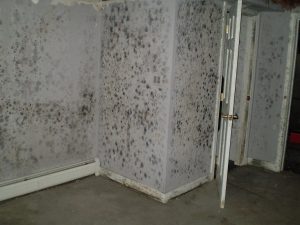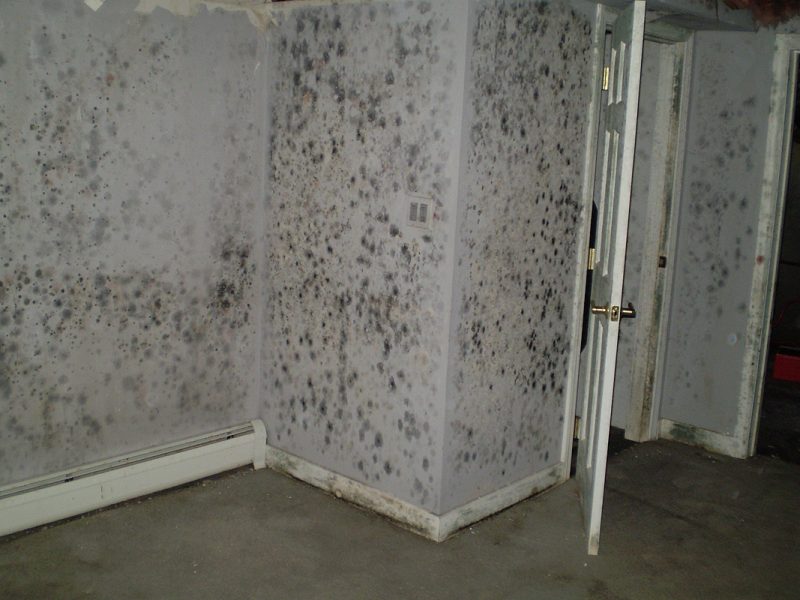
Rhonda Thurston and her eight year old son lives in an apartment in Bronx, New York. Each day, once at home, she would experience constant coughing, red eyes and face, and itching in her upper body.
She had no clue what was causing these symptoms. When she entered her bedroom, she would always experience difficulty in breathing.
Her son later fell ill and was diagnosed with pneumonia, which led her to have the air in her apartment tested.
The results of the test revealed toxin in the air produced by molds.
But, where were these molds hiding?
There were none in site. Rhonda had, had a leak in her bedrooma year prior to her and her son’s symptoms.
The leak went untreated for two months. The floors of her bedroom were ripped out and BOOM!
There laid the molds.
M.O.L.D.S…. Molds.
I am pretty sure that you have heard about molds before, and the fact that it can make you sick, but what exactly are molds?
Molds are fungi.
The number of species ranges anywhere from tens of thousands to three hundred thousand and more, and they can be found indoors or outdoors.
Damp, oxygenated, warm and humid conditions are perfect for their growth. This explains the reason Rhonda had molds growing underneath the floors of her bedroom. These conditions also make it possible for molds to be grown in basements, showers, underneath kitchen sinks (especially if there is a leak), saunas, farms, greenhouse, summer cottages, flower shops and antique shops.
They spread and reproduce by making spores (reproductive cells). Even though said conditions are what molds live for, surprisingly, they can still survive in dry conditions which or not suitable for their growth.
Does molds really affect your health or is it just talk?
For persons that have mold sensitivity, exposure to them may cause skin and eye irritation, wheezing and nasal stuffiness. On the other hand, exposure to molds by persons that are allergic to them may cause severe health issues such as fever, and shortness of breath.
In the event that an individual that has chronic lung illness becomes expose to molds, it is possible for them to develop mold infection in their lungs. Infants, children and the elderly are more susceptible to the effects of molds. With this said, it becomes clearer why Rhonda’s son developed pneumonia.
The Institute of Medicine (IOM), in 2004, found that there were enough evidence to prove a correlation between indoor exposure to molds, and respiratory tract symptoms, coughs and wheeze in persons that are presumed healthy; asthma symptoms in persons with asthma; hypersensitivity pneumonitis in individuals that are susceptible to immune-mediated condition.
Other research has shown a connection between early exposure of molds and asthma in young children, especially in children who may be genetically susceptible to asthma development.
Types of Molds
The tens of thousands to three hundred thousand and more species of molds are divided into three categories.
- Allergenic molds – these are more problematic in children. They do not usually produce life threatening effects, and only affects an individual if they are sensitive or allergic to this mold.
- Pathogenic molds – these produce infection in persons that are immune-compromised as they can grow in the lungs of these individuals.
- Toxigenic molds – these are the dangerous molds that can have serious health effect on anyone as the produce the toxin mycotoxins.
Some of the most common molds that may be found in your home are:
- Cladosporium – though common outdoors, it may make its way indoors and grow on textile and wood. If this is the mold affecting you, you may experience hay fever and asthma symptoms.
- Penicillium – if you have wallpaper and decaying fabric around your home, this is the mold that you may find growing on them. They may cause allergies and asthma, although some species produce spores.
- Alternaria – believe it or not, molds can be found on your person! These molds trigger an allergic response and can be found in our nose, mouth and respiratory tract.
- Aspergillus – think of somewhere in your home that is warm, and extremely damp…maybe a leaking basement? underneath a carpet that got wet? Where ever it is, that’s where you’ll find the Aspergillus. They also produce the toxin mycottoxins.
I have molds in my home, how do I get rid if it?
In the prevention, and, or treatment of molds, controlling the conditions that foster their growth is paramount.Here are 8tips on how to get rid of or prevent molds:
- Prevent, identify and repair water leaks. It is best that areas that have gotten wet is dried up in 24 – 48 hours to inhibit mold growth.
- Ensure you have proper ventilation. Use dehumidifier and air conditions in hot humid conditions to eliminate moisture in the air. During the cool weather, keep your home as warm as possible. The reason for doing this is to prevent condensation of cold air on surfaces.
- Remove and replace previously soaked carpets or upholstery.
- In your basement, paint concrete floors and use area rugs instead of wall to wall carpet. As relates to your bathroom, using sectional mats that can be taken up for washing are advise as suppose to using wall to wall carpet.
- Do not use insulation and wall boards in your basement as a wall finish unless your basement is completely dry.
- Clean bathroom with mold killing products.
- Open a window when or after showering.
- Add mold inhibitors to paint before application.
Are toxic molds secretly making you sick? The only way to find out is to track them down and eliminate them.
Besides that, it is important to boost your immunity so that you can protect yourself against these molds. Go to the next page and learn about the nutrients that can boost your immune system –
References:
- Centers for Disease Control and Prevention. Molds in the Environment. Retrieved from https://www.cdc.gov/mold/faqs.htm on March 10, 2017
- (2011, September 10). Why Almost All Sinus Infections Are Misdiagnosed or Mistreated. Retrieved from http://articles.mercola.com/sites/articles/archive/2011/09/10/fungus-hiding-in-your-house-and-making-you-ill.aspx
- WebMD. (2017, January 14). Moisture and Mold Problems: Preventing and Solving Them in Your Home. Retrieved from http://www.webmd.com/women/home-health-and-safety-9/mold-mildew?page=3
About the Author:
Emma Deangela is the best selling author of The Alkaline Diet Program and 80/20 Fat Loss. She has helped over tens of thousands of men and women to lose weight and transform their health with sound nutrition advice. Learn how you can lose weight fast – How to lose weight by adding these alkaline foods.
Which wonderful friends in your life would appreciate this information about toxic molds?
Please help them by sharing this eye-opening article with each of them using any of the social media and email buttons below.


Leave a Reply